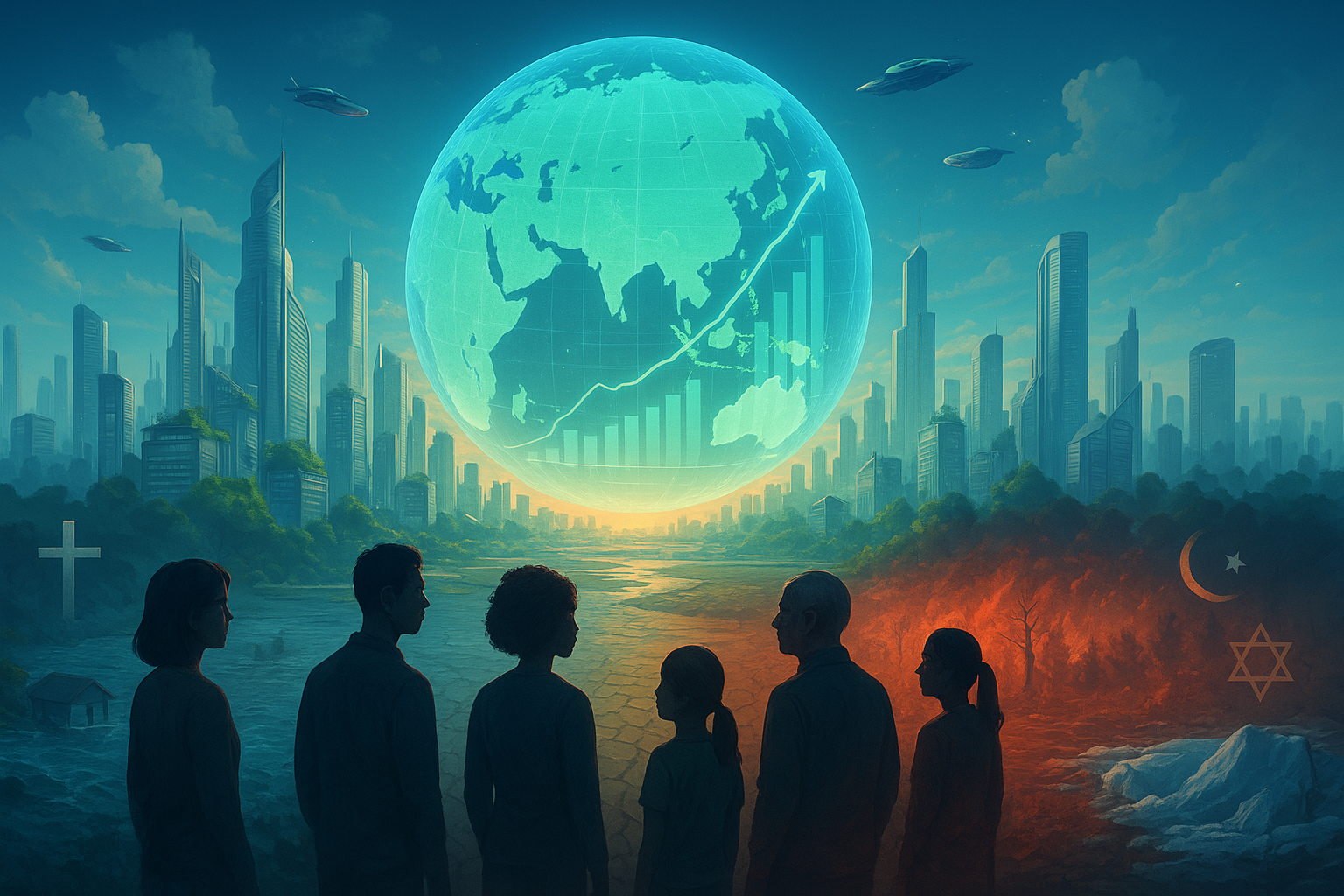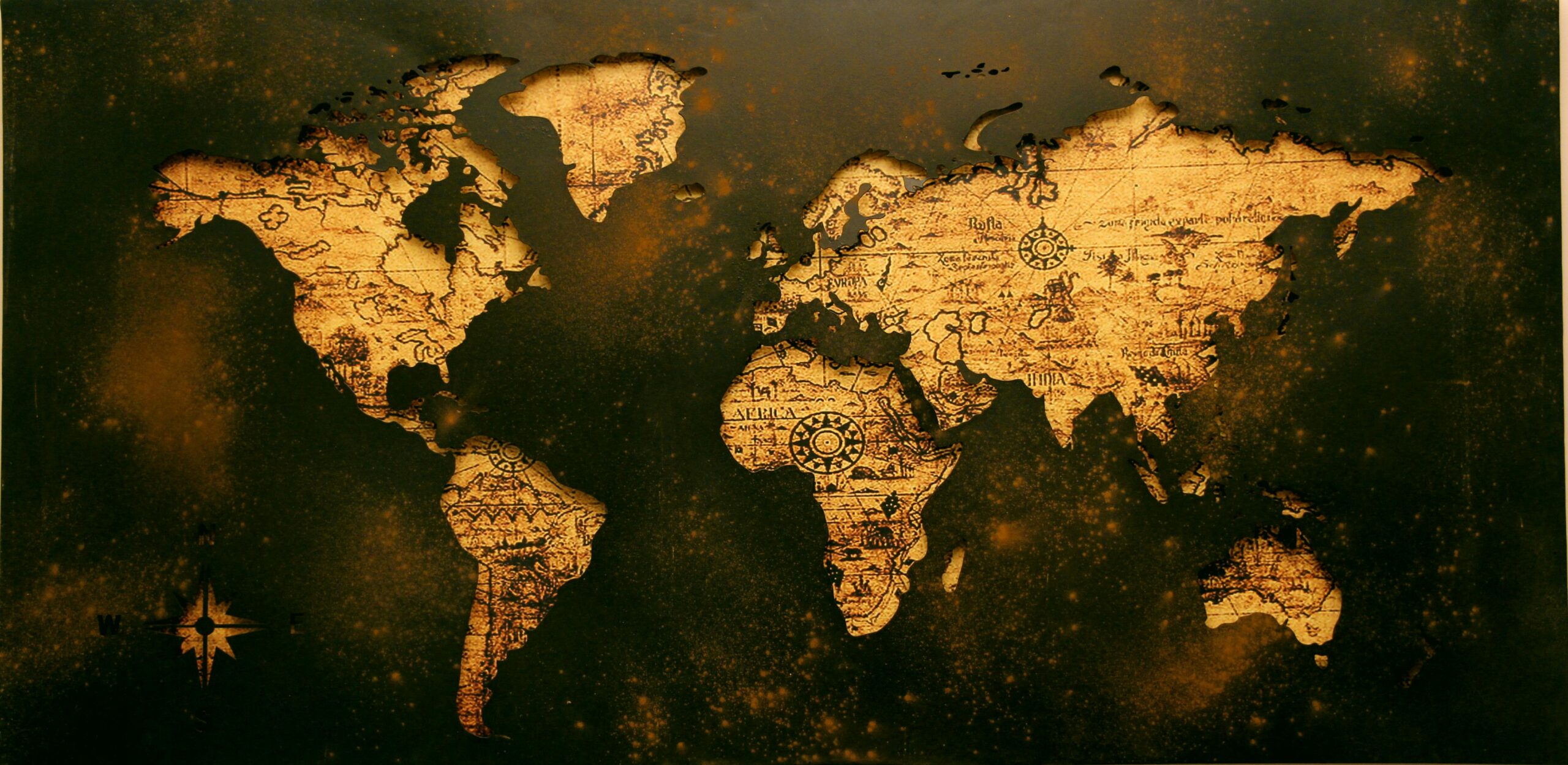By Matija Šerić
The future has always captivated humanity, sparking our imagination and curiosity. Decades ago, Eleanor Roosevelt, First Lady of the United States, remarked: “The future belongs to those who believe in the beauty of their dreams.” At some point, we all ask ourselves: “What will tomorrow bring?” This timeless desire to glimpse what lies ahead has inspired countless prophets, the most famous being Nostradamus. Yet, while their predictions are fascinating, today it is far more reliable to study the future through careful analysis and research rather than relying on speculation or alternative forms of divination.
Peering into the Times Ahead
Our contemporary world is dynamic and unpredictable, facing numerous challenges such as wars, climate change, refugee crises, and demographic pressures. The future remains uncertain. Therefore, as 2025 draws to a close, it is natural to wonder how the world will look in 2050. What will the political, economic, demographic, religious, and environmental landscape of Earth be? This question concerns not only futurists but people everywhere. While 25 years is a significant stretch in human life, barring catastrophic events such as asteroid impacts, major earthquakes, floods, or nuclear disasters, trends and data allow us to project the world’s trajectory with reasonable confidence.
The Doubling of the Global Economy
The economy will be the key determinant of how the world evolves over the next decades. Research from the consulting firm PricewaterhouseCoopers (PwC) suggests that by 2050, China will have the world’s largest economy in terms of purchasing power parity (PPP), while the United States may lose momentum, falling behind India. Under generally favorable conditions and absent major global crises, the global economy could potentially double in size by 2050.
Asia: The World’s Economic Engine
In a ranking of 32 countries based on projected GDP at PPP, China leads with a projected $58.5 trillion in 2050, representing one-fifth of the global economy. India follows with over $44 trillion, and the U.S. ranks third at $34.1 trillion. Indonesia is fourth ($10.5 trillion), Brazil fifth ($7.54 trillion), and Russia sixth ($7.13 trillion).
Mexico ranks seventh ($6.8 trillion), Japan eighth ($6.7 trillion), Germany ninth ($6.13 trillion), and the United Kingdom tenth ($5.3 trillion). Five of the world’s top ten economies will be in Asia, underscoring the continent’s rising influence. Asia’s geographic and economic strength, combined with population growth, will make it a central driver of global development, reflecting the synergy between technological innovation, industrial expansion, and trade networks.
The Rise of BRICS Nations
The global economy is expected to double in size by 2042, growing at an annual rate of approximately 2.6% from 2016 to 2050. Emerging economies—China, India, Indonesia, Russia, Brazil, Turkey, and Mexico—will continue to drive global growth, potentially accounting for nearly half of the world economy by 2050, up from roughly 35% today. Goldman Sachs projects that by mid-century, the U.S. will be the only G7 member still ranked among the largest global economies. Other G7 nations will be surpassed by China, India, Brazil, Russia, Indonesia, and Mexico. Success in these emerging economies will hinge on sustainable investments in education, infrastructure, and new technologies, especially artificial intelligence, signaling a shift in global power toward the east and south.
Population Projections
A UN report on the world population projects 9.8 billion people on Earth by 2050, up from 8.2 billion today. The global population currently grows by roughly 83 million people per year, a trend expected to continue despite declining fertility rates. Half of the world’s population will be concentrated in just nine countries: India, Nigeria, the Democratic Republic of the Congo, Pakistan, Ethiopia, Tanzania, the United States, Uganda, and Indonesia. India surpassed China in 2023 as the world’s most populous nation, with approximately 1.46 billion people compared to China’s 1.41 billion.
By 2050, Nigeria could surpass the United States, becoming the third most populous country with around 410 million people, while the U.S. would have 389 million. In the same period, the populations of 26 African nations are expected to double. The number of people over 60 is projected to double, posing major challenges for pension systems and the employment of younger workers.
China’s Aging Workforce
China, though likely to remain the world’s largest economy, faces the challenge of a rapidly aging workforce. Today, there are 7.9 working-age individuals (20–64 years) per person over 65; by 2050, this ratio will drop to 2.2:1. No country has ever supported such a large elderly population per worker. For comparison, Croatia’s ratio is currently around 1.2:1. Standard & Poor’s projects that in 2050, age-related expenditures in 30 advanced nations could rise by about 10% of GDP, potentially driving national debt ratios from 65% of GDP in 2010 to 329% in 2050, rendering government bonds virtually worthless.
Urban Dominance
According to The Economist in Megachange – What the World Will Look Like in 2050, roughly 70% of humanity will live in cities, with over 400 megacities exceeding 10 million residents. This concentration will create challenges in housing, transport, energy, and air quality. Cities will be hubs of innovation, economic growth, and cultural diversity, yet will also face social inequality and division. Managing these urban megastructures will require advanced planning, digitalized infrastructure, and sustainable development strategies. Rural areas will need to adapt to supply growing urban populations.
Major Climate Challenges
Population growth will be highest in countries contributing least to greenhouse gas emissions. However, future climate impacts will depend more on patterns of economic growth than population size. Rising temperatures, fires, droughts, floods, melting glaciers, and rising seas threaten to displace populations and devastate nations. Pressure on natural resources, particularly water and arable land, will intensify, worsening food security and economic inequality. By 2050, the UN projects 250 million climate refugees, creating immense challenges for host countries.
Reducing Global Poverty
Global disparities between rich and poor nations are expected to shrink. The share of agriculture and industry in GDP will decline, while consumption patterns shift toward services as societies grow wealthier. The expanding middle class in developing nations will further drive consumption and economic growth. Technological progress and global market integration will help poorer countries enter the global economy faster, though poverty may rise in developed countries—a trend already emerging.
Medical Progress
Healthcare is set to advance significantly. New technologies are expected to make care more affordable and accessible. Vaccines for HIV and other major diseases could emerge, and diseases currently devastating poorer nations may be eradicated. Yet, new pathogens will continue to emerge, and the risk of pandemics remains. Global collaboration in disease monitoring, prevention, and rapid response will be crucial for public health.
The Rise of Religion
According to Pew Research Center, Christianity will remain the largest religion in 2050 with 2.9 billion followers, closely followed by Islam with 2.8 billion. Despite declining influence in the West, religion will continue to expand globally. Muslims will make up 10% of Europe’s population, while the number of religiously unaffiliated people—atheists, agnostics, and others—will decline. All major religions except Buddhism are expected to grow, as Buddhist populations are aging and have low birth rates. By 2050, only 15.6% of Christians will live in Europe, down from 25.5% in 2010, with the largest Christian populations in Africa. Islam will become the second-largest religion in the U.S. and will comprise 10% of Europe’s population.
References:
The Economist: Megachange: The World in 2050
https://esa.un.org/unpd/wpp/Publications/Files/WPP2017_KeyFindings.pdf
http://www.un.org/apps/news/story.asp?NewsID=57028#.WVUYwnJSApt
http://www.pwc.com/gx/en/world-2050/assets/pwc-the-world-in-2050-full-report-feb-2017.pdf
http://www.therichest.com/rich-list/world/these-will-be-the-top-15-richest-countries-in-2050/
http://www.pewforum.org/2015/04/02/religious-projections-2010-2050/
https://worldostats.com/country-stats/population-by-country-2050-projection/







